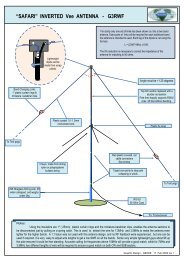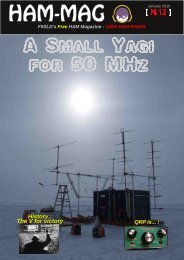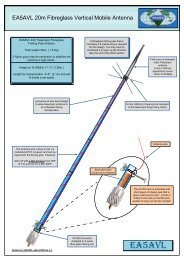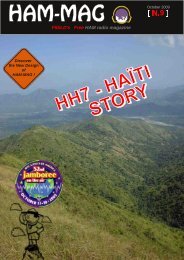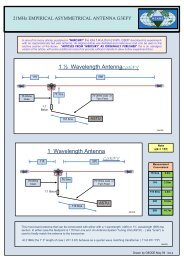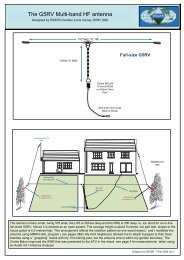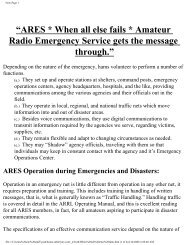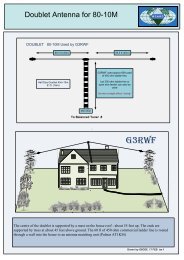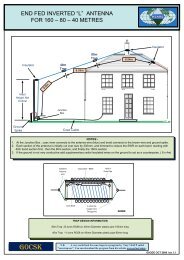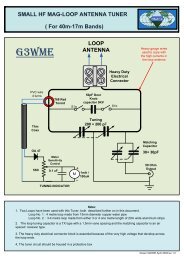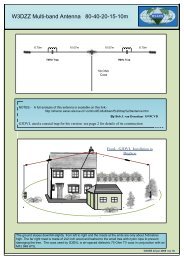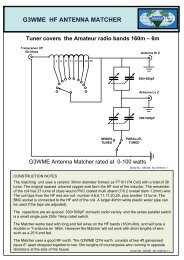Inernational HAM Magazine 100% HAM RADIO - arkansas ares races
Inernational HAM Magazine 100% HAM RADIO - arkansas ares races
Inernational HAM Magazine 100% HAM RADIO - arkansas ares races
You also want an ePaper? Increase the reach of your titles
YUMPU automatically turns print PDFs into web optimized ePapers that Google loves.
Quadrifilar Helix Antennas<br />
By dimoni<br />
What is a Quadrifilar Helix Antenna (QHA) ?<br />
Simply It's the best antenna to use for APT satellite reception the featured antenna is depicted on the left.<br />
To paraphrase M. Walter Maxwell<br />
"It comprises two bifilar helical loops oriented in mutual orthogonal relationship on a<br />
common axis. The terminals of each loop are fed in antiphase and the currents in the<br />
two loops are in phase quadrature. By selecting the appropriate configuration of the<br />
loops, a wide range of pattern shapes is available". The basic form of resonant QHA<br />
was developed by Dr. C. C. Kilgus of the Applied Physics Laboratory, JohnHopkins<br />
University, Silver Spring, Md. and published in December 1970 in "The Microwave<br />
Journal". Since then a lot of research has been done into the number of turns and<br />
length/diameter ratios. All of these affect the radiation pattern. The "traditional"<br />
fractional turn design produces a cardioid radiation pattern. It has been found that tall<br />
narrow QHA exhibit a "shapedconical" pattern with high gains to the horizon and<br />
decreased gain overhead, which is much better suited to APT ground stations (See<br />
polar diagram examples). Most of the published data and designs on narrow antennas<br />
however have been more suited to UHF and do not translate well to 137.5Mhz. One of<br />
the best is a narrow 5 turn, but at the frequencies we are interested in would make an<br />
antenna 7 metres high!<br />
A traditional 1/2 turn design<br />
A tall narrow multiturn design<br />
[ <strong>HAM</strong>MAG N.14 March 2010 ]




